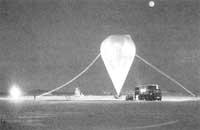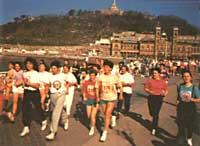Sport and health, always with the help?
1992/12/01 Bardino von, K. Iturria: Elhuyar aldizkaria
Regular physical exercise is beneficial to health. That is the general opinion we all have. This is a point that in recent years has been revealed and in which all kinds of campaigns in favor of the sport have been carried out, trying to reach different sectors of society. This is not what is questioned in this article because it is shown that physical exercise and sport make us healthier (decreasing heart disease and blood pressure, for example) and, as a consequence, lengthen life. But what happens to infectious diseases? Does physical exercise increase its resistance or, on the contrary, weakens the immune system?
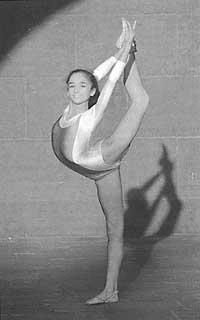
In view of the immense interests and the considerable fortunes that currently moves the high level sports competition, we can consider it normal to want to know the maximum on this topic. Most of the gymnasts who have participated in the Barcelona Olympic Games have trained more than 35 hours a week over the past year. Other sports, such as swimmers, rowers, cyclists and runners, have spent more than four hours a day in weight, gym, road, etc. This kind of hard work and, by the way, huge monetary investments, will not be, of course, sweet to knock down a last minute waterfall. Coaches and athletes, therefore, are very interested in clarifying the relationship between physical exercise and the immune system. But science has not yet given them significant answers.
However, there is no doubt that the person who is performing an intense exercise has more chances of having an unbalanced immune system and immune protections return to their level when the effort is calm. What must be found is the biological relationship between the two, that is, what happens in the body.
A curious fact: tennis players with poliovirus tend to paralysis in the arm that use racket or hay, but the rowers have paralysis in both arms and swimmers in all limbs.
Researchers will need to analyze how cells and molecules of the immune system respond to physical exercise to show that intense exercise increases the tendency to infections. And they have done so, because there are several investigations carried out with different athletes. In light of this data, the special vulnerability of athletes is considered proven.
But the first doubts arise from the interpretation of the data of these investigations. It is true that many athletes spend a lot of time training in an open place and often under harsh weather conditions. This can explain the high frequency of respiratory infections so common in the case of cyclists. On the other hand, it has been considered that the possibilities of making trips more frequent and becoming infected among athletes of a team that coexists can be more numerous. How can one say they have weakened the immune system?
To begin with, we will see what are the different components of the immune system and what their function is. And we will mainly analyze two components, B cells and T cells (lymphocytes).
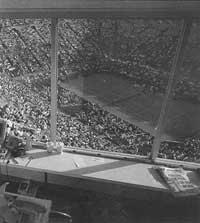
In short, B cells make antibodies that attempt to identify and neutralize foreign proteins or antigens. Antigens are segments of proteins that can be found in the skin of viruses, bacteria, or parasites.
T cells, on the other hand, have three main forms. Cytotoxic T cells, virus-infected cells, and cancer cells are removed; auxiliary T cells, which produce messenger proteins (cytokines) that instruct B cells to create antibodies, and the elimination T cells, which interrupt the production of antibodies under special conditions.
The first question is, does something happen to the relative amounts of these cells during exercise? Intense and prolonged exercise has been shown to increase the total concentration of white blood cells by up to three or five times. At first glance, therefore, it does not appear to adversely affect the immune system. But in order to make a real assessment, we should know how it influences each type of white blood cell. And at this point we know few clear things. In addition, the research data carried out with different types of athletes have not been comparable so far.
Aside from the quantitative problem, the key could also be in the arrangement of immune cells to respond to external antigen. We should give a new formulation to the question on the basis of this, which we could say more or less that does physical exercise influence cell efficacy? In this field, numerous studies have also been carried out and the responses that have been given are not entirely comparable. But one of them has created a special interest and shade.
Conducted by researchers from the Canadian University of Waterloo and conducted with different types of exercises and durations, with people in different ways. In all cases, T cells removed immediately after exercise were less strongly reproduced than those previously removed. The most extreme case was that of marathon runners: in these athletes the effectiveness of T cells was 30% lower after the race. And they needed all day to recover the reproductive capacity of their T cells.
Another surprising fact is that something similar happens to astronauts, but in these cases it has been argued that the reason was the opposite, that is, that the muscle has not used any.

Issues relating to antibodies also last. In general, it is assumed that after exercise the percentage of antibodies increases by 10%. However, according to some studies, it seems that in certain antibodies the opposite is given. For example, in a study of high level cyclists, it has been proven that at rest level A Ig is normal, so it is reduced by 70% due to intense exercise (A Ig is the main antibody that appears in sweat and saliva). In another study with high level long-distance runners, it has been found that the G Ig level, the main antibody that appears in the blood, is low at the end of the season.
With what has been said so far, it is confirmed that we still do not know too much to make round and sound statements on the subject.
When the sport is not “hard”
The term “hard” has been used repeatedly after the term “physical exercise”. What does that mean? That in the case of other exercises there is no such effect? It seems like this, especially if those who perform this light physical exercise are older people. According to a study by the University of Shanghai in China, the number of active T cells increases by 40% in people over 60 who perform a tai chi in blood (a maintenance exercise that is the old Chinese custom). Another study at the Canadian University of Newfoundland with people aged 65 and 100 concludes that those who perform light exercises need 40% less hospitalization for respiratory disease than those who do not.
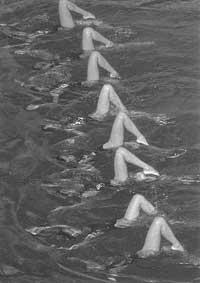
As we can see, the concrete mechanism of the relationship between exercise and the immune system remains unknown. Several scientists suggest that it may resemble the relaxation of the immune system that occurs after serious stress situations. After surgery, burns and traumatisms, complex and special immune responses are produced, including a decrease in the number and effectiveness of B and T cells. In the case of burns, a mechanism for increasing the production of destructive T cells is launched to prevent the possible rejection of skin cells damaged by heat.
The immune system has genetic, environmental, psychological, physiological and metabolic agents that can be affected by exercise. Of all these, three are the ones that have been most analyzed.
The first has to do with hormones. It is known, for example, that the concentration of adrenaline increases throughout sports activity, and it has been observed that an infusion of adrenaline and sport exert a similar influence on certain elements of the immune system.
The second says, “everything is a thing of the head.” We know that people who are in psychological stress, like students, have more often viral diseases and other symptoms related to the elimination of immunity. The sport can also generate stress and not only in those who participate physically, but also in coaches and managers. Hence the lack of resistance of athletes to infections.
If the influence of psychological factors is true, one must think that there is a communication system between the central nervous system and the immune system. What is that communication system? Despite the efforts made, it has not yet been possible to know how molecular communication occurs between the brain and the immune system.
And there is one last argument: that the immune cells, with fewer nutrients, are completely weakened. Some studies have shown that immune cells consume amino acid called glutamine and at a very high speed, which makes them much dependent on their presence in the blood.
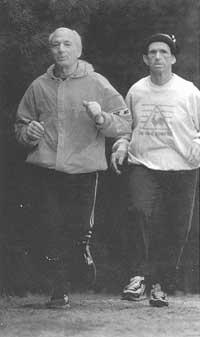
During the marathon race, the concentration of this important “fuel” of immune cells drops to 25% in the blood of runners. Also in athletes with overtraining syndrome, a low concentration of glutamine in the blood has been detected. On the other hand, it has been proven that the administration of glutamine for a month to patients with eliminated immune system increases the concentration of this amino acid in blood and considerably improves resistance to infectious diseases.
In view of all these theories and research, we have reason to think that the alterations of the immune system derived from physical exercise and excessive training are not the only origin of them.
However, it would be necessary to know precisely the nature of each of the means of action, when looking for suitable treatments. And why, thanks to intense exercise, have we developed the mechanism of weakening the immune system? We believe that we know what is the cause of the decrease in immunity that occurs in burns and interventions: do not reject affected cells. It would therefore be a protection mechanism. Is it the same what happens in the case of athletes? Biopsies have shown that marathon muscles need weeks to recover.
In the study of the relationship between sport and immunity, some have seen a new way to use sport as a “drug”. Based on the foregoing, why not think that light exercise can be considered as a therapy to stimulate the immune system of older people or AIDS patients? Or looking for the reverse effect, is it possible that very fatiguing exercises address autoimmune diseases such as rheumatic arthritis?. It will surely go too far, but also a really stimulating path, looking at the possibilities it suggests.
Conversing with Rikardo Jimenez
With the aim of knowing something more about the health problems of athletes, we went to the Center of Sports Medicine located in the San Juan de Dios Clinic of Donostia where we interviewed Dr. Rikardo Jiménez. He has extensive experience in the field of sports medicine and is a doctor of the teams Elgorriaga-Bidasoa and Eibar, among others.
Elhuyar: What are the health problems of elite athletes?
Ricardo Jiménez: In general, the health problems of elite athletes are similar to those of normal people. However, some of them, having to work outside, may have more problems in the respiratory system than normal people. Therefore, respiratory problems are very common in the upper or lower respiratory tract; tonsillitis, bronchitis, laryngitis, etc. However, it is very significant that these health problems appear when the athlete has reached his best moment. This makes us think that when the athlete has reached the top of the form, his defense mechanisms are weakened.
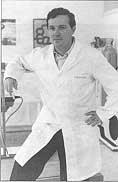
However, I would like to point out that sometimes the comparability of health problems between the average citizen and the elite athlete is not easy, since the athlete has a control and a follow-up that does not have the average citizen. Therefore, the statistics could be wrong.
There are also problems related to jatrogeny. Athletes, for example, take many anti-flamatories to treat lesions and, consequently, have problems in the digestive system: gastritis, as well as ulcers.
PaP: What is the difference between normal or popular athlete and elite athlete?
R. R. J. The difference is that in popular sport the sport is subordinate to health and in the elite to the reverse. Often, the elite athlete works both in training and in competition, knowing that what is being done at the time harms his health.
Elh. : Examples?
R. R. J. The elite athlete continues to work normally, despite the small lesions that in the long term will have negative consequences. But he knows that if he took a small respite, those consequences would not occur. However, the requirements of the high-level competition do not allow you to do so, loss of form, etc. A good example of this is that many athletes have elbow or knee osteoarthritis at the end of their activity. If you analyze the ankles of the footballer who has finished his professional activity, we will find a beautiful collection of pathologies.
Elh. : We speak constantly of elite athlete. What is the elite athlete?
R. R. J. Well, certainly sport as modus vivendi. This in a given moment has concrete results, because otherwise he would lose his life. However, among those who cannot be considered elite athletes (because their results are not superior or because they do not live from there), there are some cases in which the behavior of elite athletes is the same. This occurs sometimes in veteran and elderly athletes. There are veteran athletes who have the level of training of elite athletes, as a result of an inadequate interpretation of the sport.
More than forty years the human body weakens. From that age, the sport should be seen as a health factor and not as a competition zone, since otherwise it will become a health loss factor.
Elh. : What is the relationship between elite sports and immunization system problems?
R. R. J. There are many discussions on this topic. There is no unified opinion in this regard. For example, yesterday I reviewed a series of studies that Americans have done recently and in which it is concluded that it is not clear.
Among the athletes there is a process of several phases. First, there is an adaptation process that improves your overall health status through sport, including the immune system. That would be health sport. When the result is the goal, the recovery time is much shortened, more and more the need to train more hours... Thus, from a moment on, an expenditure is produced both in the immune system and in the endocrinological system. The capacity of the organism has been spent to meet the requirements of training. In this way the organism begins to consume itself. Although it takes vitamins and others, the organism does not recover energy. With a global balance of one year, perhaps yes, but at a given time the training begins without completely recovering the lost in the previous round.
In this situation, protein catabolism exceeds anabolism, that is, it overcomes deterioration.
Some trace elements, such as zinc, which have not been studied very well, are not obtained enough in a normal diet and, although usually the athlete ingests the vitamins he needs and often does not absorb or assimilate properly.
On other occasions there are problems of balance in vitamins, proteins, etc. The athlete often prefers the magic formulas given by his coach or doctor, which can be dietetically unbalanced, to specific and known dietary formulations. The athlete finds it difficult to score what he eats, measure how much he weighs and take this type of work (to then schedule a balanced diet) and prefers magic formulas.
In short, when the elite athlete is ready, he has more chances of suffering from infectious diseases, which indicates a greater vulnerability of the immune system. In addition, the situation of the disease is worse, the response can be slower and have a greater pharmacological need. On the contrary, the athlete who submits the sport to health has a more or less developed immunization system.
Elh. : What are the most common diseases of elite athletes?
R. R. J. As I said before, the most common are those of the respiratory system (especially those of high respiration), in which our climate can influence. However, in my experience I have found rare diseases and that shows me, at least in part, that the immune system is weakened. I have known some cases of cystitis. Cystitis is not very common among us and much less among young people and men. I have seen such cases at the gates of major competitions, for example in tests to get the minimum mark to go to the Olympics.

Gai honi buruzko eduki gehiago
Elhuyarrek garatutako teknologia




